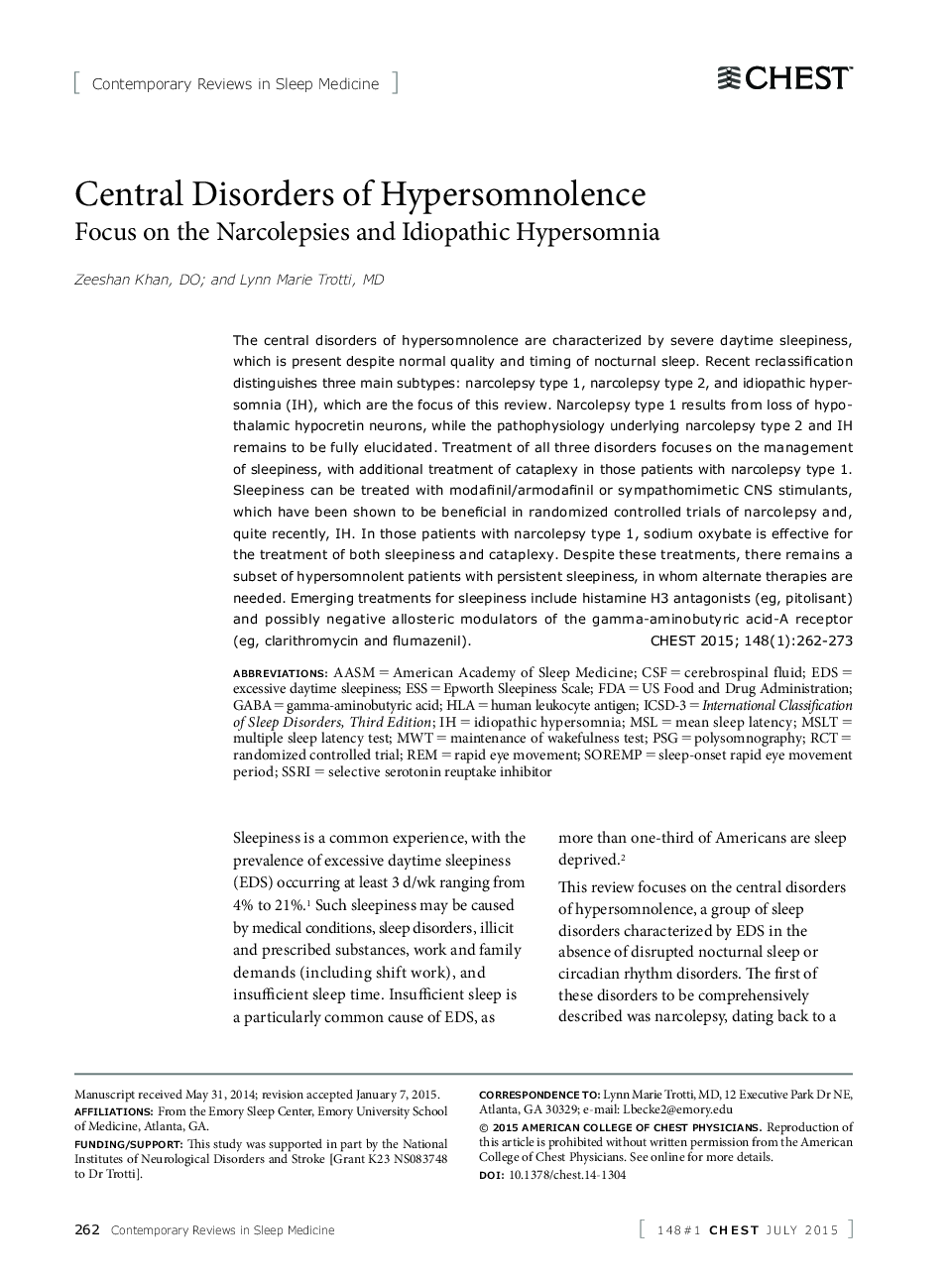| Article ID | Journal | Published Year | Pages | File Type |
|---|---|---|---|---|
| 5952769 | Chest | 2015 | 12 Pages |
Abstract
The central disorders of hypersomnolence are characterized by severe daytime sleepiness, which is present despite normal quality and timing of nocturnal sleep. Recent reclassification distinguishes three main subtypes: narcolepsy type 1, narcolepsy type 2, and idiopathic hypersomnia (IH), which are the focus of this review. Narcolepsy type 1 results from loss of hypothalamic hypocretin neurons, while the pathophysiology underlying narcolepsy type 2 and IH remains to be fully elucidated. Treatment of all three disorders focuses on the management of sleepiness, with additional treatment of cataplexy in those patients with narcolepsy type 1. Sleepiness can be treated with modafinil/armodafinil or sympathomimetic CNS stimulants, which have been shown to be beneficial in randomized controlled trials of narcolepsy and, quite recently, IH. In those patients with narcolepsy type 1, sodium oxybate is effective for the treatment of both sleepiness and cataplexy. Despite these treatments, there remains a subset of hypersomnolent patients with persistent sleepiness, in whom alternate therapies are needed. Emerging treatments for sleepiness include histamine H3 antagonists (eg, pitolisant) and possibly negative allosteric modulators of the gamma-aminobutyric acid-A receptor (eg, clarithromycin and flumazenil).
Keywords
SOREMPFDAEDSMSLAASMMWTESSICSD-3REMMSLTRCTIdiopathic hypersomniaRandomized controlled trialMultiple sleep latency testHuman leukocyte antigenHLAAmerican Academy of Sleep MedicineUS Food and Drug Administrationgamma-aminobutyric acidMaintenance of Wakefulness Testrapid eye movementexcessive daytime sleepinessCSFCerebrospinal fluidEpworth sleepiness scaleSelective serotonin reuptake inhibitorSSRIPSGPolysomnographyGABA
Related Topics
Health Sciences
Medicine and Dentistry
Cardiology and Cardiovascular Medicine
Authors
Zeeshan DO, Lynn Marie MD,
